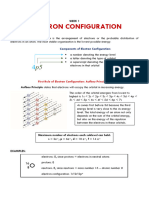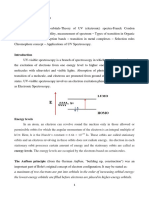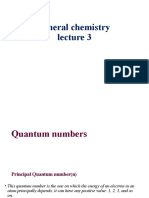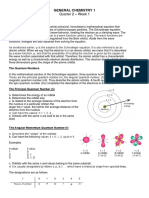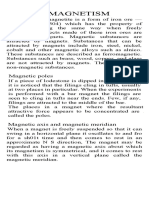0% found this document useful (0 votes)
72 views18 pagesElectronic Configuration Notes
The document provides detailed notes on electronic configurations, including the principal, angular momentum, magnetic, and spin quantum numbers, as well as the rules governing electron arrangements such as the Aufbau principle, Pauli exclusion principle, and Hund's rule. It discusses the significance of ionization energy, factors influencing it, and how it relates to the chemical behavior of elements. Additionally, it includes exercises for writing electronic configurations and understanding the implications of ionization energy in determining metallic and non-metallic character.
Uploaded by
ahebwamartin2Copyright
© © All Rights Reserved
We take content rights seriously. If you suspect this is your content, claim it here.
Available Formats
Download as DOCX, PDF, TXT or read online on Scribd
0% found this document useful (0 votes)
72 views18 pagesElectronic Configuration Notes
The document provides detailed notes on electronic configurations, including the principal, angular momentum, magnetic, and spin quantum numbers, as well as the rules governing electron arrangements such as the Aufbau principle, Pauli exclusion principle, and Hund's rule. It discusses the significance of ionization energy, factors influencing it, and how it relates to the chemical behavior of elements. Additionally, it includes exercises for writing electronic configurations and understanding the implications of ionization energy in determining metallic and non-metallic character.
Uploaded by
ahebwamartin2Copyright
© © All Rights Reserved
We take content rights seriously. If you suspect this is your content, claim it here.
Available Formats
Download as DOCX, PDF, TXT or read online on Scribd
/ 18









